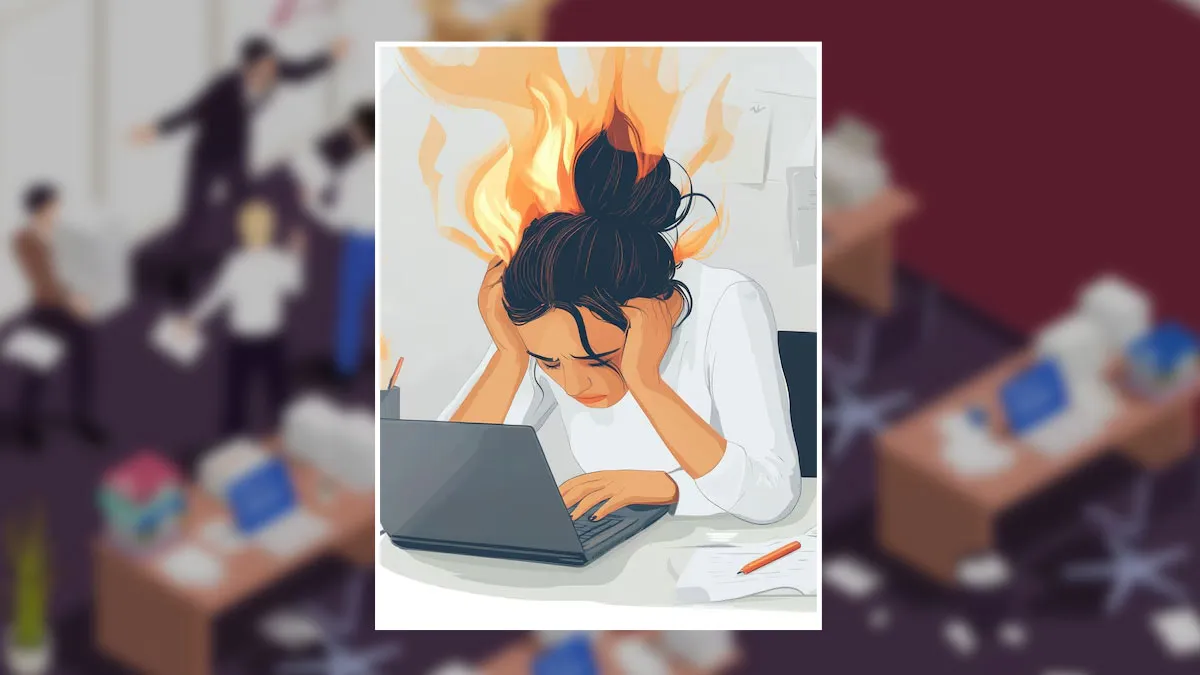
Burnout goes beyond simply feeling tired at work. It's a physical, mental, and emotional response to prolonged stress. When work pressures continuously build up, it begins to wear you down, leading to feelings of being undervalued and overwhelmed. Burnout drains your energy and hampers productivity, often spilling over into your personal life as well. But what exactly is burnout, what triggers it, and how can it be managed? To help us understand this better, we consulted Dr. Chandni Tugnait, MD (A.M.), a psychotherapist, life coach, healer, and founder & director of Gateway of Healing. She provided valuable insights on the subject.
Dr Chandni emphasised that workplace burnout is a serious condition, distinct from everyday stress. Unlike temporary stress, which can sometimes motivate better performance, burnout has a lasting impact on both mental and physical well-being. It develops gradually, leaving individuals emotionally exhausted, disconnected from their work, and feeling less capable.
She said, “Burnout happens when there's a prolonged imbalance between job demands and a person’s abilities or values. It’s not just about being overworked; it also involves feeling that the work doesn't align with your capabilities or personal beliefs.”

Unlike stress, which can occasionally be constructive, burnout consistently diminishes productivity and engagement. It can also lead to physical symptoms and more severe health issues over time.
Don't Miss: Pune Employee Dies Allegedly Due To Work Pressure, Mother Writes Emotional Letter To Company
Burnout can creep up gradually, so it’s crucial to recognise the early warning signs. Unlike ordinary stress, burnout symptoms tend to persist and impact multiple aspects of your life.
Dr. Chandni shared several key symptoms to watch for:
Recognising these signs requires self-awareness and, at times, input from trusted colleagues or loved ones.
Dr Chandni explained that work environments and company cultures play a significant role in either causing or preventing burnout. Here’s how:
Don't Miss: What Is Emotional Abuse: 5 Key Signs You Shouldn’t Ignore
Dr Chandni highlighted that workplace environments and company cultures significantly influence burnout. Supportive workplaces that value and engage employees can prevent burnout by providing adequate resources, fostering open communication, and promoting work-life balance. Recognising achievements and offering flexibility also help manage stress effectively.

Dr Chandni said, “Conversely, toxic work environments, characterised by high pressure, long hours, and inadequate support, contribute to burnout. Poor management, lack of recognition, and unclear job expectations can leave employees feeling overwhelmed and undervalued.”
Alignment between an organization’s values and those of its employees is crucial; a mismatch can lead to disconnection and reduced motivation. Companies that embody their values and involve employees in decision-making foster a sense of belonging and purpose, essential for preventing burnout.
Dr Chandni says, “Work-life balance and boundary-setting are vital for preventing burnout. A healthy work-life balance allows individuals to rest and engage in enjoyable activities outside of work, helping to alleviate chronic stress. This balance enables them to disconnect from work pressures and focus on personal well-being.”
She further said that boundary-setting is equally crucial. Establishing clear limits between work and personal life helps individuals manage their time and energy effectively. By restricting work hours and avoiding work-related tasks during personal time, such as checking emails after hours, individuals can protect themselves from constant demands.
Together, these practises create a sustainable work environment where individuals can thrive without compromising their health, maintaining a sense of control and reducing feelings of overwhelm.
Keep reading Herzindagi for more such stories.
Credits: Freepik
Also watch this video
Herzindagi video
Our aim is to provide accurate, safe and expert verified information through our articles and social media handles. The remedies, advice and tips mentioned here are for general information only. Please consult your expert before trying any kind of health, beauty, life hacks or astrology related tips. For any feedback or complaint, contact us at compliant_gro@jagrannewmedia.com.